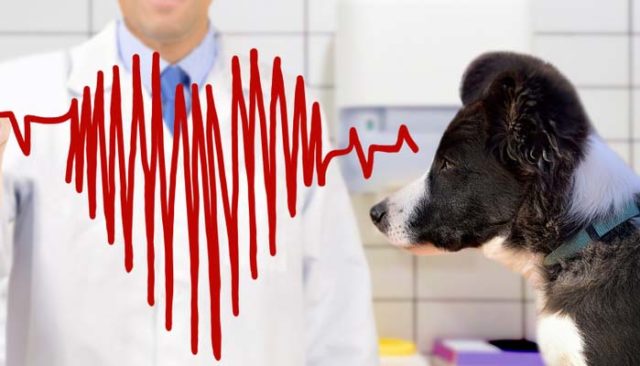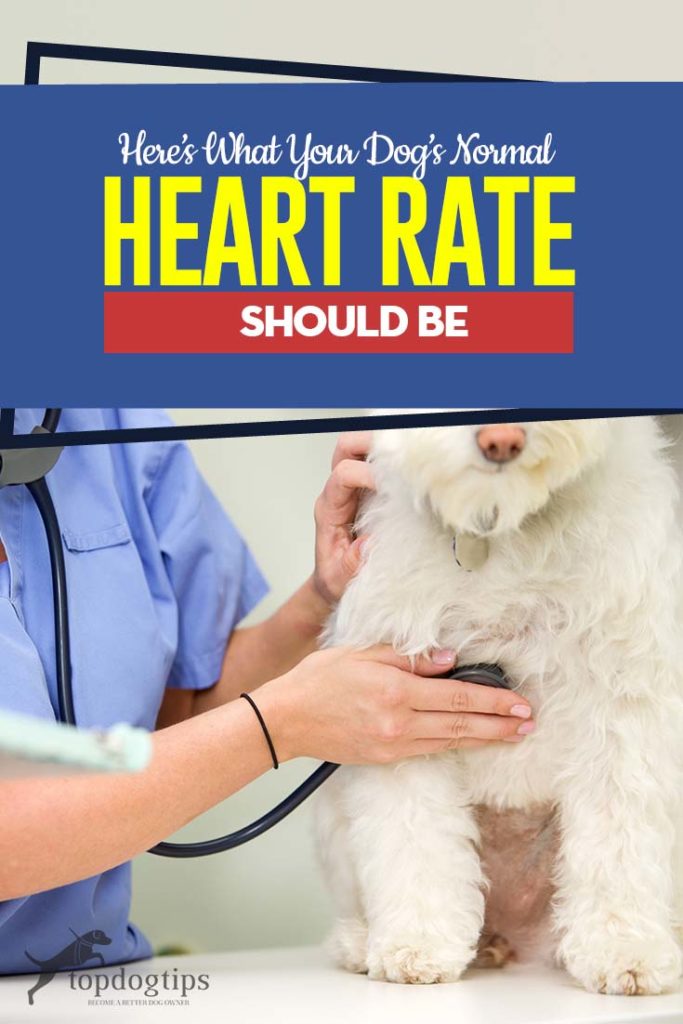
Table of Contents
When your dog is running, jumping, and playing at full speed, it's clear by their panting alone that their heart is working hard to keep that blood pumping.
So, how do you know when it's time for them to slow down and take a break? What is the normal heart rate for dogs, really?
WATCH: How to Check a Dog’s Heart Rate at Home
The Main 3 Things to Check For
Your dog’s overall well-being depends on not just their RPM but their respiration and their temperature as well.
This trifecta is what vets examine when you bring your pup in for a physical; it can tell them a lot about what’s happening inside the dog's body.
Respiration relates to their breathing, and a normal resting rate would be 10 to 35 breaths per minute for all healthy dogs.
How to Find a Dog's Respiratory Rate
To measure their respiration, place your hand against the roundest part of the chest where you can easily feel their breath.
For 15 seconds, record how many breaths your dog takes. Then, take the amount of breaths and multiply them by 4.
This gives you the number of breaths per minute, and now you have their respiratory rate.
[Number of Breaths] x 4 = Respiratory Rate
Body Temperature Matters Too
The average canine temperature, regardless of size, is 100 to 102.5 degrees Fahrenheit while at rest.
However, when stress is placed on the body, whether it be psychological or just from chasing a Frisbee, the temperature can elevate a bit.
While a small raise in body heat isn’t a problem, an extreme jump can cause clotting and heat stroke and is a sign of a potential issue.
If you suspect your dog might be overheating, don’t throw them in an ice bath.
Instead, offer a cool room with a fan or some type of ventilation and water, and allow them to rest until their heart rate has gone back to normal.
Proper recovery is essential; you don’t want to place more stress on the dog's body than what they’re already experiencing, and an ice-cold bath could cause your pup to go into shock.
The Breed Makes a Difference
While there is a standard bar for what constitutes as “normal” for a dog’s heart rate, there are some exceptions to the rule.
Greyhounds, for example, have hearts that are much larger compared to that of other canines, and because of this, their blood pressure is higher, and their resting heart rate is slower.
Beware of Strange Breathing
Heavy breathing is to be expected anytime your pup is forcing their heart and lungs to work a little harder than usual.
It's good for them, and it keeps their organs strong, but consistently erratic breathing, respiratory issues, and other similar changes in the actual sound or consistency of their breath are signs to take seriously.
Owners who have experienced the tragic loss of a dog due to congestive heart failure or a tumor have discovered their dog’s unfortunate ailment after noticing a change in their breathing.
After running, swimming, or chasing a ball, these dogs displayed labored or hollow-sounding breaths.
For some owners, this may or may not be a normal thing for their pet, but if it's something you began to notice as “unusual” after time or as your dog has gotten older, it's time to see the vet.
Other things to look for if you notice an unusual heart rate in a dog and suspect a heart tumor or related issues are whining due to pain in the chest, unusual lethargic behavior, and fluid build-up near the tummy.
King Charles Cavalier Spaniels, Dobermans, Boxers, and Irish Wolfhounds are all predisposed to genetic heart problems, and if you own one of these breeds, you’ll need to be extra vigilant.
Tips on Keeping Your Dog’s Heart Strong
In order to keep your dog’s heart rate healthy and normal and prevent heart problems in your pooch, the heart itself needs to be in good condition at all times.
We spend hundreds of dollars throughout the span of our lives on skin, coat, hip, and joint supplements, but the most essential parts of our bodies are the things we can’t see – vital organs.
 A silent killer among both people and dogs is obesity, and when fatty tissue builds up inside the heart and arteries, it's just a matter of time before it becomes fatal.
A silent killer among both people and dogs is obesity, and when fatty tissue builds up inside the heart and arteries, it's just a matter of time before it becomes fatal.
A good way to tell if your pupper is overweight is to take a look at them from the top and use the BCS chart.
If they have an overly round shape with no visible rib cage, they need to get in shape.
The space between their rib cage and hips should taper inward like an hourglass, but there should still be fat covering individual ribs.
Essentially, they should be able to be felt but not seen.
Add fish oil or another source of Omega-3s and B vitamins to their diet regularly, and be sure that your kibble is high in protein and fiber but lower in carbs.
If you must, put your pooch on an overweight dog diet to reduce extra body fat and remove stress from your pet's heart and joints.
Practice Taking Your Dog’s Vital Signs
Most of us go through our day-to-day routine assuming that if our dogs are eating, playing, and behaving as though they’re happy and comfortable, they’re doing just fine.
However, it's still a good idea to keep a notebook on hand and take your dog’s vitals at least once or twice a month. Here's a guide on how to do it.
Even if there’s nothing wrong initially, if you do start to notice discrepancies in your dog’s heart rate or respiration, you’ll have detailed notes on the severity and time span of progression.
Sharing this information with your vet also helps to get a prognosis early on and gives them a better picture of what might be going on.
After digesting all of this information, it's easy to feel nervous about how hard your dog is pushing it during playtime.
The good news is, unless your breed is already predisposed to irregular heartbeat or arrhythmia, you shouldn’t have anything to worry about.
Heart problems aren’t a common issue in most healthy dogs, but they are more likely to occur after age 5. Pay attention to your dog's normal heart rate and check it once in a while.
READ NEXT: 9 Emergency Dog Health Conditions That Cannot Be Delayed
Pin and share with other dog owners:















